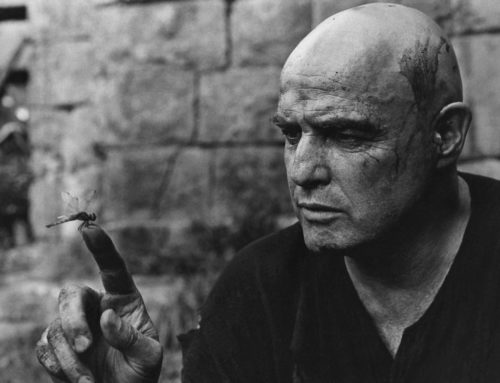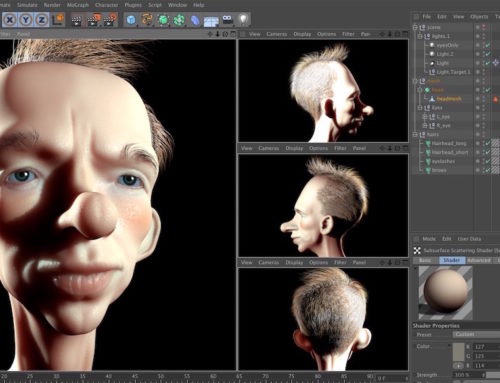On December 4th, the winner of 2018’s Turner Prize was announced. The annual art prize, previously awarded to the likes of Damien Hirst, Wolfgang Tillmans and director Steve McQueen, often invites controversy and this year was certainly no exception. All four of the nominees – three individuals and a collective – were nominated for work in film and each film had an important political message. Out of the four finalists, Glasgow-based artist Charlotte Prodger was named the winner of the £25,000 prize for her 2017 solo exhibition ‘BRIDGIT/Stoneymollan Trail’ at Bergen Kunsthall. ‘BRIDGIT’, the film on view at London’s Tate Britain until January 6th, is a thoughtfully edited series of short clips exploring personal experiences of queerness. Filmed entirely on the artist’s iPhone, it features long shots of Scottish standing stones, views of the countryside from a train window and interiors of Prodger’s home.
Prodger is no stranger to working with film; she has been making video art for the past 20 years and has exhibited in art galleries and institutions around the world. However, the jury said her recent films ‘BRIDGIT’ and ‘Stoneymollan Trail’ represented a shift towards a new, more expansive method of working. Having previously worked in everything from found Youtube footage to 16mm film, the artist said she has recently become interested in the immediacy of smartphone cinematography. ‘BRIDGIT’ includes autobiographical snippets, taken at home and on her travels. The narration of the film moves between autobiography – her experiences in Aberdeenshire in the early 90s, strangers struggling to define her gender – and quotes taken from author and musician Julian Cope’s ‘The Modern Antiquarian’.
Next to the other Turner Prize nominees, Prodger’s smartphone film hardly looks like your typical art film. Unlike the high production value of Naeem Mohaiemen’s ‘Tripoli Cancelled’ and Luke Willis Thompson’s moody (and controversial) 16mm film ‘Autoportrait’, ‘BRIDGIT’ feels more familiar, in tune with the videos we are accustomed to seeing online, at one point even referencing one of the most pervasive viral trends, the cat video. But this familiarity is by no means a bad thing.
Art critic and scholar Erika Balsom expressed her enthusiasm for the artist’s work in an article for Frieze magazine, saying ‘Prodger articulates an approach to personal filmmaking that is as intelligent as it is moving, using an iPhone camera to tackle problems of autobiography and authenticity in ways that today’s legions of personal essayists and selfie obsessives would do well to learn from.’ In a speech at the award ceremony, Alex Farquharson, director of Tate Britain and the chair of the Turner Prize judging panel, described ‘BRIDGIT’ as “unexpectedly expansive. This is not what we expect from video clips shot on iPhones”, going on to describe Prodger’s films as the “most profound use of a device as prosaic as the iPhone camera that we’ve seen in art to date”.
Video artists like Prodger have long been experimenting with smartphone cameras, even before the invention of the now ubiquitous iPhone. But in the last few years, as the iPhone entered its second decade, the interest — and the quality — of mobile filmmaking has increased exponentially, enabled in part by the improved technology in newer generations of phones as well as by the increase in video editing apps and filters that can add a cinematic quality to what are essentially home-videos.
One film that helped to bring smartphone filmmaking to cinema screens was 2015’s ‘Tangerine’. Shot on an iPhone 5S using an app called Filmic Pro, Sean Baker’s micro-budget comedy amazed audiences at Sundance film festival, following the revelation that the feature length-film was shot entirely on an iPhone, a fact that had been kept under wraps until the screening. Thoughtfully written and, at times, laugh out loud funny, the smartphone film opens in a dingy Los Angeles doughnut shop and follows the explosive friendship of two trans sex workers, played by Kitana Kiki Rodriguez and Mya Taylor, around the streets of the city. To quote a review on Rotten Tomatoes, “Tangerine shatters casting conventions and its filmmaking techniques are up-to-the-minute, but it’s an old-fashioned comedy at heart—and a pretty wonderful one at that.”
‘Tangerine’ may not be the first smartphone feature film; previous films include ‘Olive’, shot on a Nokia N8 in 2011, and 2012’s ‘Searching for Sugar Man, which was filmed using an app called 8mm Vintage Camera after they ran out of actual 8mm film. However, it was really Baker’s ‘Tangerine’ that broke new ground in smartphone filmmaking, bringing it to more mainstream audiences. Baker says that filming on an iPhone allowed them to get more authentic footage, shooting incognito on busy LA streets. As he said of filming ‘Tangerine’: “It just looked like we were shooting selfies.” But, using anamorphic lens adapters and a Steadicam rig to capture widescreen vistas of downtown LA, ‘Tangerine’ elevates iPhone photography to a cinematic level. To the director Sean Baker and the lead actress Kiki Rodriguez, it was important to make the low budget film feel like a big budget movie. With the script centering around often underrepresented trans women, Rodriguez wanted to make sure their voices were heard; as Baker explained, “she was asking for something that would present these characters to mainstream audiences in a pop culture way, so that they could identify with them. That’s how we reach the mainstream.”
More recently, Sean Baker has collaborated with indie director Steven Soderbergh on another groundbreaking iPhone film. Set in the halls of an unusually sinister mental health facility, the 2018 psychological thriller ‘Unsane’ stars Claire Foy as an unstable bank employee, trapped in a ward against her will. In the thriller, the quality of the iPhone’s footage is used to Soderbergh’s advantage, using the subtly flattened depth of focus to create the disorienting sense that something is not quite as it seems. In one of the most exhilarating scenes of the film, the lightweight maneuverability of the iPhone comes into its own; in a tiny, claustrophobic cell, the camera moves quickly to capture 360-degree footage with the intensity that the scene requires. In ‘Unsane’, Soderbergh has used the humble iPhone to dramatic and thrilling effect. As the director told Indiewire, “anyone going to see this movie without any idea of the backstory to the production will have no idea this was shot on the phone.”
While the smartphone may not totally level the filmmaking playing-field (Soderbergh has a 30-year career behind him and access to sophisticated post-production technologies), the increasing prevalence of smartphone films makes producing a ‘movie’ more accessible than ever before. Even for established filmmakers like Baker and Soderbergh, the benefits of shooting on a smartphone are obvious. Filming on a smartphone can cost much less than a traditional shoot, working with a conventional crew and kit. ‘Tangerine’ was made with a budget of $100,000, a relatively small budget compared to the films it launched alongside at Sundance in 2015. In an even more extreme case that year, smartphone filmmaker Victoria Mapplebeck featured at The London Film Festival with a short film produced for less than £2000. “Smartphones are portable, unobtrusive and – even for the most cash strapped filmmaker – they’re accessible,” Victoria explains, “Seeing it up on a big screen made me realise that the gap between the idea for a film and it reaching its final audience has never been so small.”
Although more expensive equipment can offer a higher quality final product, it is in fact good editing, quality audio and engaging writing that keep an audience enthralled. As Charlotte Prodger proves with her award winning artwork ‘BRIDGIT’ and Soderbergh demonstrates in the thrilling ‘Unsane’, it is possible to create a truly gripping film of any genre with little more than the camera in your pocket.
‘Lights, iPhone, Action: How smartphone cinematography is democratising filmmaking’ is an article written by Ruth Pilston. You can find out more about Ruth on her site.




